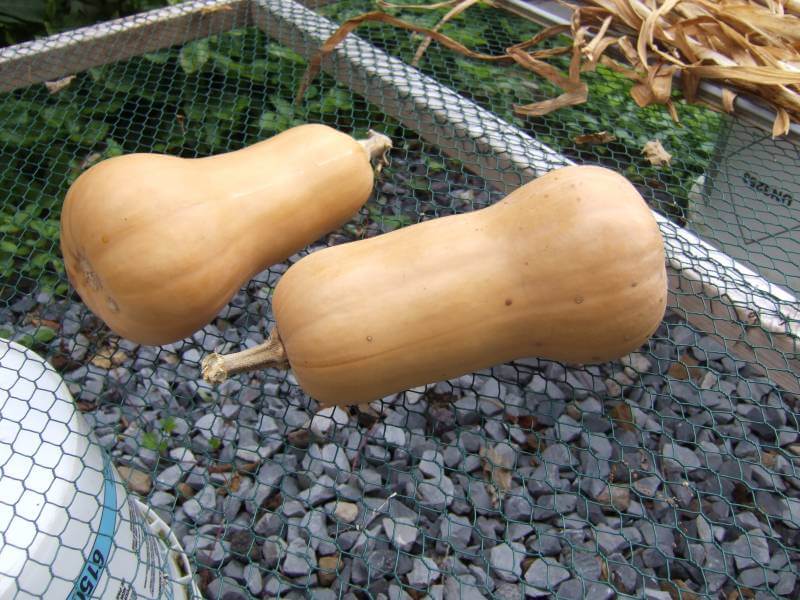Many gardeners raise winter squash because they store well. In fact, the term "winter squash" refers to the time when these vegetables are stored, not when they're grown or harvested. They are planted in late spring and grown through summer just like summer squash, but winter squash require more days to maturity and are harvested in fall. After fall harvest, it's a simple process to prepare squash for storage that lasts well into winter. Storing squash saves you money by serving up garden-fresh flavors in the heart of winter. Savory soups, sweet desserts, and steamy side dishes are some of the tastiest uses for winter squash. Best of all, stored winter squash demands no elaborate preservation technique. Curing is the secret to successful long-term storage, and it's almost as easy as harvesting.
What is curing?
Curing is simply storing winter squash at a warm temperature with good air circulation for a period of time, usually 10 to 14 days.
Why cure squash?
When you harvest winter squash, the mature fruits contain excess water. The process of curing squash allows some of that water to exit the fruit. Getting rid of excess water does several things:
- It concentrates the natural sugars, which makes the squash taste sweeter.
- It slows the fruit's respiration rate, which enhances long-term storage.
- It helps reduce chances of rot.
A harvested winter squash continues to breathe or respire. During the curing process, the skin becomes harder, forming a protective layer over flesh. That harder skin slows respiration, which ultimately improves fruit keeping quality. Harder skin also resists rot better, another secret for problem-free long-term storage.
Which types of squash need curing?
Winter squash that requires curing includes Blue Hubbard, Buttercup, Butternut, and Spaghetti. Curing actually reduces storage life and quality of Acorn squash—no need to devote time or space to curing these.





How long do cured squash keep?
How you pick and handle winter squash directly affects how well they store. Follow these simple tips to ensure your squash cures and lasts well.
- Cure blemish-free fruit. If skin is broken or bruised, fruit won't store well.
- Use scissors or pruners to cut squash from vines. Pulling can easily dislodge or break the stem, which creates a large wound on fruit that's likely to rot.
- Maintain 2- to 3-inch-long stems on squash. If stems break off or loosen, fruit won't store well. Use fruit with broken stems first and store others.
- Frost shortens storage life. A light frost can help sweeten some winter squash, but it drastically reduces storage life. Harvest all squash before night temperatures dip into the 40s.
- Keep squash dry. Don't handle or harvest wet fruit.
- Gently remove any bits of blossom clinging to the bottom of squash.
You'll see best storage results when you stash squash in a cool, dry spot. For most winter squash, store at 50º to 55º F with relative humidity of 60 to 70 percent. The one exception, again, is Acorn squash, which should be kept at temperatures less than 55. Higher temperatures cause the flesh to become stringy. Avoid storing squash in higher humidity, which can promote rot.Storage life varies by squash type. Acorn squash stores the shortest amount of time: 4 weeks. Spaghetti stores four to five weeks; Buttercup, 13 weeks; Butternut, up to six months; Blue Hubbard, six to seven months.




 Herbs
Herbs
 Vegetables
Vegetables
 Fruit
Fruit
 Flowers
Flowers
 Succulents
Succulents


